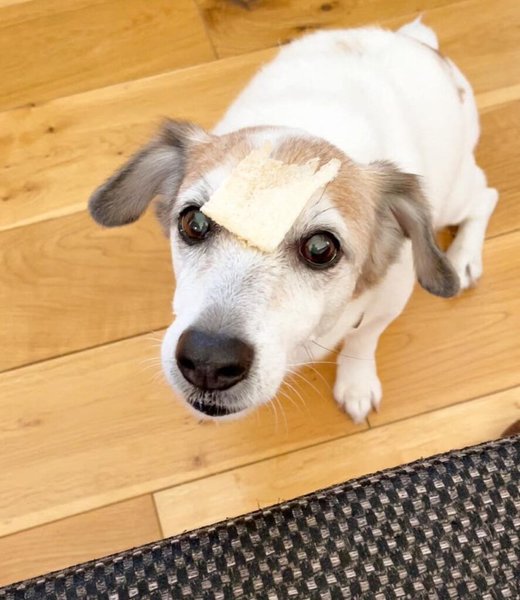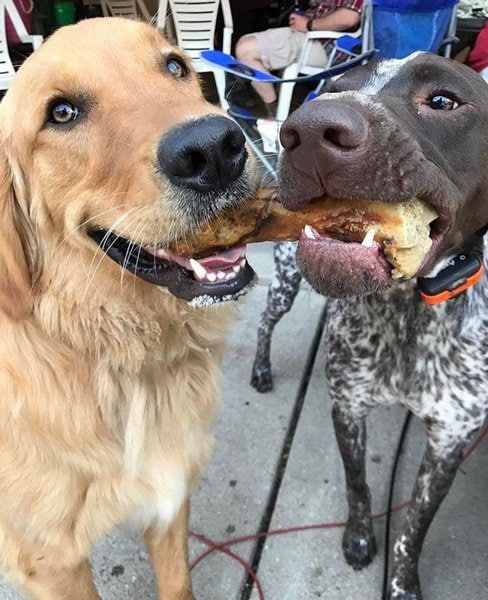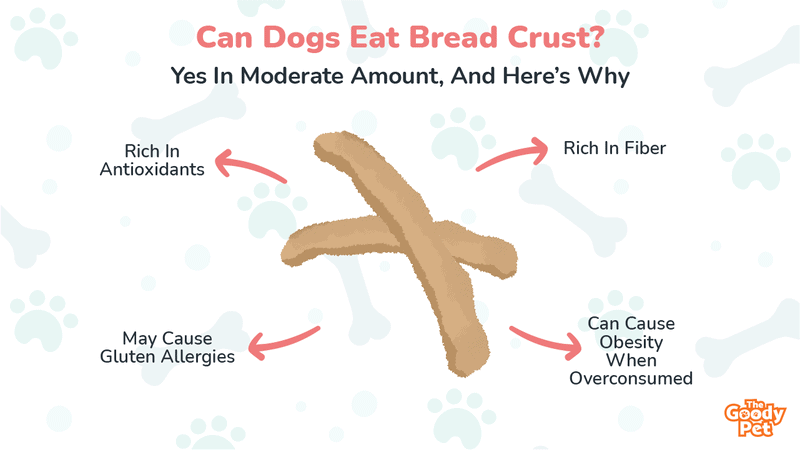Picture this. You just sat down to enjoy your tasty sandwich and your furry best bud trots over to you and hits you with those big, beautiful pleading eyes. Just a small bite. You won’t even notice it’s gone. This is a scenario that every dog owner has been through and if you haven’t it is only a matter of time before your dog puts your love to the test by begging for a piece of your sandwich. But can dogs actually eat bread crust?
Yes, bread crust, in moderate amounts, is safe for dogs to consume. However, there are a few exceptions based on the ingredients used to make the bread as well as the dog’s tolerance for components of the bread crust like gluten.
In the sections below, we shall take a closer look at why it is ok to sometimes feed your dog bread crusts as well as what could go wrong if you overdo it. That way, the next time your dog asks for your sandwich you will know how to react.
Can Dogs Eat Bread Crust?
Dogs can eat bread crusts in moderate amounts. To play it safe, it is best to just give the crusts as small treats not exceeding the crust of a single slice of bread.
The Right Amount
For very young puppies, this translates to about a ¼ or ½ of the crust in a single slice of bread. For older and larger dogs, you can get away with giving the pooch the entire crust of one slice of bread.
So if you are pinching some off your sandwich, avoid giving the dog more than half of the crust from 2-slice sandwiches.
Just remember that the crust is not filling at all and your dog will most likely keep asking for more. However, you have to be firm and train the pooch to be satisfied with the small treat-like portions. That way, you avoid complications like obesity from the high-calorie snack.
Even in its moderate amounts, bread crust has a lot to offer your dog in terms of health and general benefits. Here are a few perks that your dog can look forward to.
Rich In Antioxidants
Bread crust has been shown to be a rich source of antioxidants. One of the most important of these is pronyl-lysine. This antioxidant is known to have anti-cancer effects in addition to helping with detoxifying the dog’s system.

Rich In Fiber
Another reason why it is ok to feed your dog bread crust is the fact that it has a lot of dietary fibers. This will come in particularly handy if your dog suffers from bowel issues whether it is frequent diarrhea or constipation.
A Tasty Treat
It goes without saying that the crust packs the biggest punch as far as flavor is concerned in a slice of bread. Your dog will also agree which is what makes bread crust such a convenient treat for your dog.
So if you run out of treats to reward your pooch for being a good girl or boy, bread crust should do the trick.
Is It Dangerous For Dogs To Eat Bread Crust?
It can actually be dangerous to feed dogs bread crust. The harmful side effects can stem from either overfeeding or allergic reactions to the components of the bread crust.
Here are a few things that could go wrong and signs that you should stop feeding your dog bread crust.
Gluten Allergies
Dogs frequently suffer from different forms of food intolerance with gluten allergies being some of the most common. If your dog is allergic to gluten, feeding them bread crust will trigger a reaction.
Some of the signs of allergic reactions to gluten in dogs include:
- Inflamed eyes, nose, and paw pads
- Diarrhea
- Bloating and abdominal pain
- Itchiness and skin rashes
- Unexplained weight loss
- Failure to thrive

Obesity
Obesity happens when dogs over-consume bread crust. This is because bread is high in calories and low in nutritional value.
It also doesn’t help that bread is rarely filling which means you may find yourself giving your dog more and more of the crust before they finally get satisfied.
If your dog is already overweight or prone to developing obesity due to their breed genetics, it is best to avoid bread crust altogether.
On the other hand, if your dog is of normal weight and not predisposed to obesity, you can feed them bread crust but in moderation, to avoid changing their fate for the worse.
Toxic Ingredients
Another scenario where feeding your dog bread crust is not advisable is when ingredients that are toxic to the dog have been used to make the bread. Here are some of the most common culprits:
- Artificial sweeteners like xylitol
- Nuts like macadamia or walnuts
- Garlic or onion
These ingredients will trigger adverse reactions that in some cases can actually be life-threatening.
Raw Dough
Finally, avoid feeding your dog raw bread dough at all costs.
In addition to the risk of contamination by bacteria, raw dough is generally harder for the dog to break down and may cause great abdominal discomfort.





